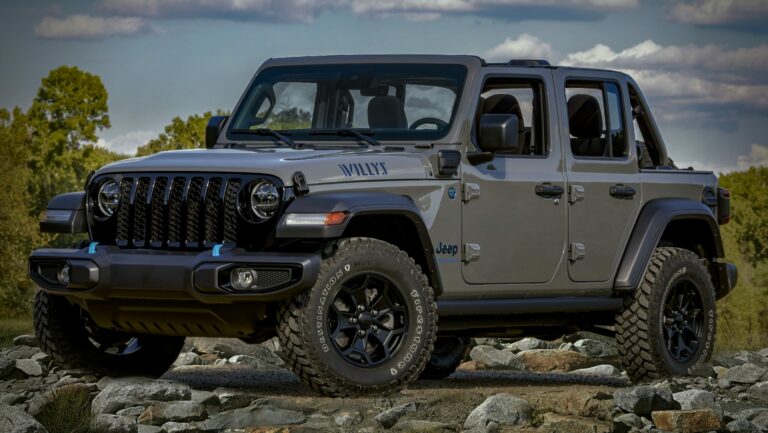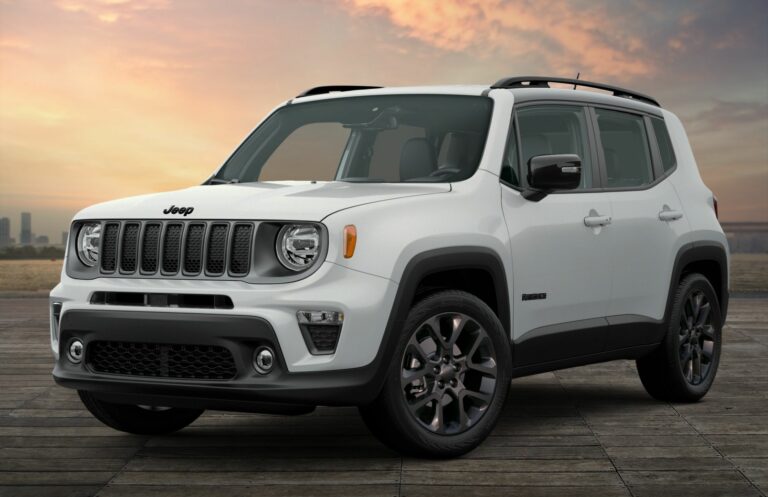1990 To 2000 Used Jeep Wrangler For Sale Near Me: Your Ultimate Buyer’s Guide
1990 To 2000 Used Jeep Wrangler For Sale Near Me: Your Ultimate Buyer’s Guide jeeps.truckstrend.com
The open road, the call of the wild, and the unmistakable silhouette of a Jeep Wrangler – few vehicles evoke such a strong sense of adventure and freedom. For many enthusiasts and first-time off-roaders, the sweet spot for finding a truly authentic and capable Jeep lies within the 1990 to 2000 model years. This era, encompassing the tail end of the YJ generation and the introduction of the beloved TJ, offers a unique blend of classic ruggedness, surprising modern comfort (especially in the TJ), and a level of mechanical simplicity that makes them both affordable to acquire and a joy to maintain.
This comprehensive guide is designed to be your indispensable resource in navigating the exciting world of 1990-2000 used Jeep Wranglers for sale near you. We’ll delve into what makes these vehicles special, what to look for, how to find them, and what to expect once you’ve parked one in your driveway. Whether you’re a seasoned Jeeper or dreaming of your first open-air adventure, understanding these iconic models is the first step towards finding your perfect companion.
1990 To 2000 Used Jeep Wrangler For Sale Near Me: Your Ultimate Buyer’s Guide
Understanding the Era: YJ vs. TJ (1990-2000 Wranglers)
The 1990-2000 timeframe for the Jeep Wrangler marks a significant transition, featuring two distinct generations, each with its own character and appeal. Knowing the differences is crucial for your search.
The YJ Generation (1990-1995)
The YJ Wrangler, produced from 1987 to 1995, is instantly recognizable by its square headlights – a feature that initially drew criticism from purists but has since become a unique identifier. Mechanically, the YJ utilizes leaf springs at all four corners, a design carried over from its CJ predecessors.
- Characteristics: Simple, rugged, and more closely tied to the original military Jeeps in terms of ride quality. It often feels more raw and connected to the road (or trail).
- Pros: Generally more affordable, classic "Jeep" aesthetic for some, robust leaf spring suspension (though harsher), and less electronic complexity. The 4.0L inline-six engine (introduced in 1991) is a strong, reliable workhorse.
- Cons: Stiffer ride due to leaf springs, older interior design, and some earlier models (pre-1991) came with less desirable engines. Rust can be a significant issue due to age.

The TJ Generation (1997-2000)
After a brief hiatus in 1996 (there was no 1996 model year Wrangler), Jeep introduced the TJ for the 1997 model year. This was a revolutionary change, bringing back the round headlights and, more significantly, introducing a coil-spring suspension at all four corners.
- Characteristics: Offers a significantly smoother and more compliant ride than the YJ, making it much more comfortable for daily driving while still maintaining exceptional off-road articulation. The interior was also modernized.
- Pros: Superior ride comfort, improved off-road articulation, more refined interior, standard driver and passenger airbags, and a robust frame. The 4.0L inline-six engine is legendary for its durability.
- Cons: Generally more expensive than comparable YJs due to their popularity and improved features. Some early TJ specific issues can arise (e.g., blend door issues in HVAC).
Key Takeaway: If ride comfort and modern amenities are a priority, lean towards a TJ. If you prefer a more traditional, rugged experience and a lower price point, the YJ might be your match. Both are incredibly capable off-roaders.
Why Choose a 1990-2000 Jeep Wrangler?
Beyond their distinctive looks, these older Wranglers offer compelling advantages that make them highly sought after in the used market.
- Timeless Appeal & Iconic Design: Both YJ and TJ models possess that quintessential "Jeep look" that transcends automotive trends. They are instantly recognizable and evoke a sense of adventure.
- Legendary Off-Road Prowess: Equipped with solid axles, robust 4WD systems (Command-Trac NP231 transfer case is common and excellent), and short wheelbases, these Wranglers are incredibly capable off the pavement, even in stock form.
- Unmatched Customization Potential: The aftermarket for YJs and TJs is vast. From lift kits, bigger tires, and heavy-duty bumpers to drivetrain upgrades, you can truly build a Wrangler tailored to your exact needs and preferences.
- Simplicity & Maintainability: Compared to modern vehicles laden with complex electronics, these Wranglers are relatively straightforward. Many repairs and modifications can be tackled by a home mechanic, saving on labor costs.
- Strong Community Support: The Jeep community is passionate and welcoming. Online forums, local clubs, and social media groups offer a wealth of knowledge, support, and camaraderie.
- Affordability & Value Retention: While prices vary, older Wranglers offer excellent value for their capability. They also tend to hold their value remarkably well, often appreciating if kept in good condition.
Key Considerations Before Buying Your Vintage Wrangler
Finding the right 1990-2000 Wrangler requires careful consideration of several factors beyond just year and model.
- Rust: The Ultimate Enemy: This is arguably the single most critical factor for older Wranglers, especially in regions that experience road salt or high humidity. Inspect the frame (especially near the skid plate, control arm mounts, and rear spring perches), body tub (under the carpet, near the rear wheel wells, and rocker panels), and body mounts thoroughly. Surface rust is manageable, but widespread rot is a deal-breaker.
- Engine Options:
- 4.0L Inline-Six (I6): This is the gold standard for Wranglers of this era. Known for its incredible durability, ample torque, and relatively simple design, it’s the preferred choice for most. It can easily last 200,000+ miles with proper maintenance.
- 2.5L Inline-Four (I4): While adequate for light duty and better on gas, it lacks the power and torque of the 4.0L, especially if you plan on running larger tires or doing serious off-roading. It’s also very reliable but can feel underpowered.
- Transmission:
- Manual: Common choices include the AX-15 (YJ/early TJ) and NV3550 (later TJ). Both are robust. Check for smooth shifts and proper clutch engagement.
- Automatic: Typically the 32RH (YJ/early TJ) or 42RLE (later TJ). While convenient, automatics can be less desirable for serious rock crawling due to heat generation, but perfectly fine for most uses. Check fluid condition and shift points.
- Axles:
- Front: Most YJs and TJs come with a Dana 30 front axle. It’s generally strong enough for moderate off-roading and up to 33-inch tires.
- Rear: This is where it gets interesting. Most Wranglers come with a Dana 35 rear axle, which is considered the weakest link for serious off-roading, especially with larger tires or aggressive driving. The highly desirable Dana 44 rear axle (standard on Rubicons, optional on some Saharas and Sport models, especially in later TJs) is significantly stronger and a major plus.
- Previous Modifications: A modified Jeep can be a blessing or a curse. High-quality lifts, properly installed lockers, and well-chosen tires can add value. However, poorly installed modifications, cheap parts, or questionable welding can lead to major headaches and safety issues. Look for evidence of professional work or research the brands used.
- Soft Top/Hard Top: Check the condition of the soft top (tears, zipper function, window clarity) or hard top (cracks, leaks). Both are expensive to replace.
- Rust Again! It cannot be stressed enough. Bring a flashlight and a small hammer to gently tap suspected areas to listen for solid metal versus flaky rust.
The Search: Finding Your Vintage Wrangler Near Me
Once you know what you’re looking for, it’s time to hit the pavement (and the internet) to find your perfect Jeep.
- Online Marketplaces:
- Craigslist & Facebook Marketplace: Excellent for finding private sellers. Be prepared to filter through many listings and act quickly on good deals. Search variations like "Jeep Wrangler YJ," "Jeep TJ," "Wrangler 4.0," etc.
- AutoTrader & Cars.com: Primarily dealerships, but occasionally private sellers. Less common for vehicles of this age, but worth a look.
- eBay Motors: Can be good for specific or modified Jeeps, sometimes offering nationwide shipping options.
- Dedicated Jeep Forums & Classifieds: Websites like WranglerForum.com, JeepForum.com, and local off-road club forums often have classified sections where enthusiasts sell well-maintained vehicles.
- Local Dealerships (Specialized): While large new car dealerships rarely carry older Wranglers, smaller, independent used car lots, especially those specializing in trucks or SUVs, might have a few.
- Word of Mouth & Local Mechanics: Let friends, family, and trusted local mechanics know you’re looking. Often, the best deals come from someone selling a vehicle they’ve known and maintained.
- Local Jeep Clubs/Events: Attend local Jeep meetups or off-road events. You might find someone looking to sell, or at least get advice from experienced owners.
Pro Tip: Expand your search radius. A willingness to travel a few hours can significantly increase your options, especially if you’re in a rust-prone area and need to look south or west.
What to Look For During an Inspection (Practical Advice)
Never buy a used vehicle, especially an older Wrangler, without a thorough inspection and test drive.
- Bring a Friend: An extra set of eyes can catch things you miss.
- Inspect the Frame and Undercarriage:
- Lie down and look at every inch of the frame. Pay special attention to the areas where the control arms mount, the skid plate bolts, and the rear spring perches. Look for flaking rust, holes, or patched areas.
- Check the exhaust system for leaks or excessive rust.
- Inspect suspension components (shocks, springs, control arms, sway bars) for damage, leaks, or worn bushings.
- Engine Bay:
- Look for fluid leaks (oil, coolant, power steering).
- Check fluid levels and condition (dark, sludgy oil or cloudy coolant are red flags).
- Listen for unusual noises (knocking, ticking, grinding) when the engine is running cold and hot.
- Check belts and hoses for cracks or wear.
- Look for signs of poor maintenance (e.g., dirty air filter, corroded battery terminals).
- Interior:
- Lift the carpet or floor mats to check for rust in the floorboards. Water leaks are common, leading to floor rust.
- Check seat condition, dashboard cracks, and functionality of all gauges, lights, and HVAC controls.
- Test the radio, wipers, and horn.
- Exterior:
- Look for body damage, mismatched paint, or signs of accident repair.
- Check the condition of the tires (tread depth, even wear, age).
- Inspect the soft top or hard top for tears, cracks, and proper fit.
- Test Drive:
- Start the Jeep cold. Listen for any strange noises.
- Check for smooth acceleration and braking.
- Test the steering for excessive play or wandering.
- Engage 4WD (both 4-High and 4-Low) and drive a short distance (on a loose surface, not pavement) to ensure it engages properly.
- Listen for clunks, squeaks, or grinding noises from the drivetrain.
- Pay attention to how the transmission shifts.
- Pre-Purchase Inspection (PPI): If you’re serious about a vehicle, spend the $100-$200 to have a trusted independent mechanic (especially one familiar with Jeeps) perform a comprehensive inspection. This can save you thousands in unexpected repairs.
Owning and Maintaining Your Classic Wrangler
Congratulations! You’ve found your 1990-2000 Used Jeep Wrangler. Now, the adventure truly begins. These vehicles, while robust, benefit greatly from regular maintenance and attention.
- Routine Maintenance: Stick to regular oil changes, fluid checks (coolant, brake fluid, power steering, differential, transfer case, transmission), and filter replacements.
- Common Wear Items: Be prepared to address common wear-and-tear items over time, such as U-joints, ball joints, tie rod ends, control arm bushings, and steering box play.
- Rust Prevention: Even if your Jeep is rust-free, take steps to keep it that way. Regularly wash the underside, especially after off-roading or driving on salted roads. Consider undercoating or rust-inhibiting sprays.
- Aftermarket Support: Embrace the vast aftermarket. If a part breaks, chances are there’s an upgraded, stronger replacement available.
- Join the Community: Connect with local Jeep clubs or online forums. These resources are invaluable for advice, technical help, and finding parts.
Estimated Price Table: 1990-2000 Used Jeep Wrangler
Prices for 1990-2000 Jeep Wranglers vary significantly based on location, condition, mileage, modifications, engine, and drivetrain. The table below provides a general range; expect to pay more for well-maintained, lower-mileage, or highly modified examples, especially TJs with the 4.0L engine and Dana 44 axles.
| Year Range | Model | Engine Option | Transmission | Condition | Estimated Price Range (USD) | Key Differentiating Factors |
|---|---|---|---|---|---|---|
| 1990-1995 | YJ | 2.5L I4 | Manual/Auto | Fair | $4,000 – $7,000 | Square lights, leaf springs, older interior. |
| 1990-1995 | YJ | 4.0L I6 | Manual/Auto | Good | $7,000 – $12,000 | Preferred engine, often more desirable. |
| 1990-1995 | YJ | 4.0L I6 | Manual | Excellent | $12,000 – $20,000+ | Well-maintained, low rust, desirable mods. |
| 1997-2000 | TJ | 2.5L I4 | Manual/Auto | Fair | $6,000 – $9,000 | Round lights, coil springs, less power. |
| 1997-2000 | TJ | 4.0L I6 | Manual/Auto | Good | $9,000 – $15,000 | Smoother ride, more modern, strong engine. |
| 1997-2000 | TJ | 4.0L I6 | Manual | Excellent | $15,000 – $25,000+ | Pristine, low miles, desirable options (e.g., Dana 44 rear). |
| Special Cases | Sahara/Sport | 4.0L I6 | Manual/Auto | Good-Exc. | $12,000 – $28,000+ | Higher trims, potentially Dana 44 rear, more features. |
Note: These are general estimates. Prices can fluctuate wildly based on market demand, regional availability, and specific vehicle history. Always factor in potential immediate maintenance costs.
Frequently Asked Questions (FAQ)
Q1: What’s the main difference between a YJ and a TJ?
A1: The most noticeable difference is the headlights (YJ has square, TJ has round). Mechanically, the YJ uses leaf springs, while the TJ uses a more comfortable coil spring suspension at all four corners. The TJ also has a more modernized interior and standard airbags.
Q2: Which engine is better, the 2.5L or the 4.0L?
A2: For most buyers, the 4.0L inline-six is strongly recommended. It offers significantly more power and torque, making it much better for highway driving, larger tires, and off-roading. The 2.5L is reliable but can feel underpowered.
Q3: How much rust is too much when buying an old Wrangler?
A3: Surface rust on the frame or components is usually manageable. However, if you find holes in the frame, body mounts, rocker panels, or floorboards, or if the rust feels flaky and compromises structural integrity, it’s generally too much. Frame repair is costly and complex.
Q4: Are 1990-2000 Wranglers expensive to maintain?
A4: They are generally less expensive to maintain than modern vehicles due to their mechanical simplicity and readily available, affordable parts. However, as older vehicles, they will require more frequent attention and replacement of wear items. Factor in a budget for unexpected repairs.
Q5: Can I daily drive an older Wrangler?
A5: Yes, many people daily drive YJs and TJs. TJs are significantly more comfortable for daily driving due to their coil spring suspension. YJs can be a bit rougher. Both will have more road noise and less creature comforts than modern SUVs.
Q6: What should I budget for immediately after purchase?
A6: Even for a seemingly good condition Wrangler, budget for a full fluid change (engine oil, transmission, transfer case, differentials), spark plugs, air filter, and a thorough inspection by a mechanic. If it needs tires, brakes, or minor suspension work, factor those in too. An extra $1,000-$2,000 is a good buffer.
Q7: Is it hard to find parts for these older Wranglers?
A7: No, parts availability is excellent! Due to their popularity and the vast aftermarket, you can find almost any part you need, from OEM replacements to upgraded performance components, at most auto parts stores or online retailers.
Conclusion
The hunt for a 1990 to 2000 used Jeep Wrangler for sale near you is more than just a search for a vehicle; it’s a quest for a piece of automotive history and a gateway to unparalleled adventure. Whether you lean towards the rugged simplicity of a YJ or the refined capability of a TJ, both generations offer an authentic Jeep experience that newer models often struggle to replicate.
By understanding the nuances between the models, meticulously inspecting for common issues like rust, and knowing where to look, you can significantly increase your chances of finding a well-maintained example. Embrace the journey, be patient, and always prioritize a thorough inspection. The reward of owning and driving one of these iconic, capable, and infinitely customizable machines is an experience that truly sets you free. Happy hunting, and may your next adventure begin behind the wheel of your classic Wrangler!





